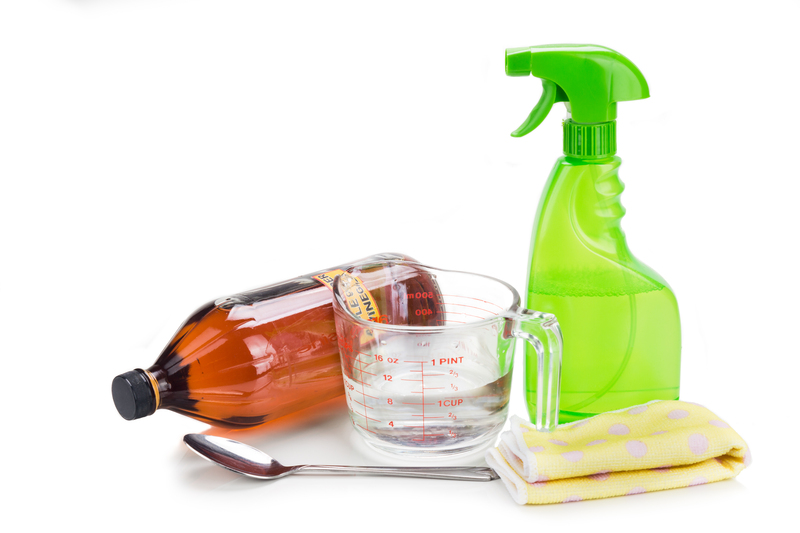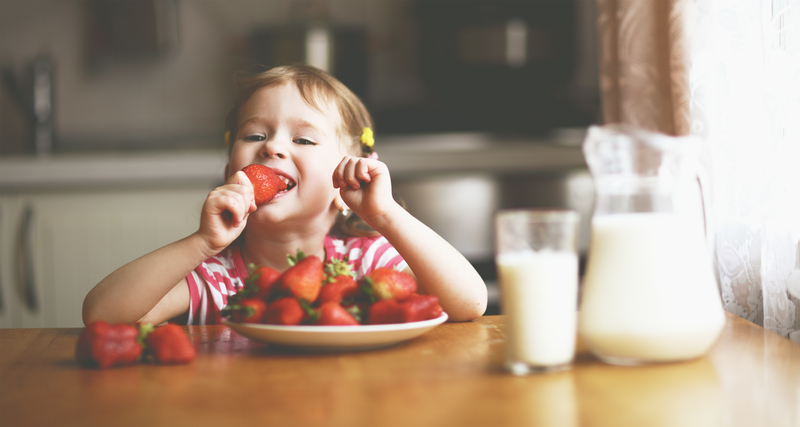Clean Your Stovetop Like a Pro: Removing Burnt-on Residue
Posted on 23/09/2025
Clean Your Stovetop Like a Pro: Removing Burnt-on Residue
A sparkling, clean stovetop is every home chef's pride, yet stubborn burnt-on residue can make even the tidiest cook cringe. If you've ever wondered how to remove burnt stains from stove tops or are searching for the best stovetop cleaning tips for tough grease, you've come to the right place! This comprehensive guide will walk you through the best methods, tools, and products for cleaning gas and electric stovetops, ensuring you achieve a kitchen that shines.
Why a Clean Stove Top Matters
Keeping your stovetop spotless isn't just about aesthetics. Regular stovetop cleaning improves kitchen hygiene, prevents the build-up of stubborn grime, and extends the life of your appliance. Here's why you should prioritize cleaning those burnt-on spots:
- Prevents cross-contamination: Food debris can harbor bacteria, mold, and even attract pests.
- Improves cooking efficiency: Clogged burners and surfaces heat unevenly, affecting your recipes.
- Reduces fire hazards: Grease buildup is a serious fire risk.
- Enhances kitchen appearance: A gleaming cooktop elevates your entire kitchen's look!

Understanding Burnt-on Residue: What Causes It?
Burnt-on residue is the stubborn layer of food, oil, and sugar that adheres to your stove when spills aren't wiped up immediately. High temperatures cause these particles to harden and sometimes even carbonize, leading to black marks on stovetops that seem impossible to remove.
The type of stovetop you have--gas, electric, or glass-ceramic--can also affect the cleaning process. Understanding the material is crucial before you tackle the mess!
Common Types of Stovetops
- Gas Stovetops: Feature removable grates and burners. Burnt food tends to gather around burner caps and under the grates.
- Electric Coil Stovetops: Food can get burnt onto coils or drip pans underneath.
- Glass/Ceramic Stovetops: Smooth surface shows every spot; sensitive to scratches and requires gentle products.
General Precautions Before Cleaning
- Turn off and cool: Never attempt to clean a hot stove top!
- Unplug electric units: For electric and induction stoves, unplug the appliance for safety.
- Test cleaners: Always test your cleaning solution on a small, inconspicuous area, especially with glass or ceramic surfaces.
- Gather tools: Use soft cloths, non-abrasive sponges, and plastic scrapers rather than steel wool to avoid scratches.
How to Clean a Gas Stovetop Like a Pro
Step 1: Remove Grates and Burners
- Lift off removable parts and soak them in hot, soapy water for 15-20 minutes.
- For especially tough stains, sprinkle baking soda over the parts before soaking.
Step 2: Tackle the Surface
- Wipe away loose crumbs and debris with a damp cloth.
- Apply a paste of baking soda and water directly onto burnt-on spots.
- Let the paste sit for at least 15 minutes to soften stubborn residue.
Step 3: Scrub Gently
- Using a non-abrasive sponge, scrub away the softened residue.
- A plastic scraper can help lift especially stubborn bits.
- Rinse the surface with a clean, damp cloth.
Step 4: Clean Grates and Burners
- After soaking, scrub grates and burner caps with a stiff brush or sponge.
- Dry completely before reassembling to prevent rust.
Step 5: Polish and Protect
- Buff the surface with a microfiber cloth for a streak-free shine.
- Optional: Spray a kitchen-safe degreaser or vinegar for extra sparkle.
How to Clean Electric Stovetops (Coil & Solid Disk)
Step 1: Remove Coils and Drip Pans
- Ensure the stove is unplugged and completely cool.
- Lift up the coils; some models require gentle wiggling to detach.
- Remove drip pans and soak in hot, soapy water, adding baking soda for extra cleaning power.
Step 2: Clean the Surface
- Wipe the surface with a damp cloth to clear away crumbs.
- Use a stovetop cleaner or a paste of baking soda and water on burnt-on areas.
- Allow the mixture to sit for 20 minutes, then scrub with a non-abrasive sponge.
Step 3: Clean Coils and Drip Pans
- Do not submerge electric coils--wipe them with a soapy, damp cloth only.
- Scrub drip pans with a sponge and rinse; for stubborn stains, try soaking in vinegar.
- Dry thoroughly before reassembling.
How to Clean Glass and Ceramic Stovetops
Glass and ceramic cooktops require special care to avoid scratches and dullness. Here's how to remove burnt residue from glass stove tops effectively:
Step 1: Remove Debris and Apply Cleaner
- Wipe away crumbs and loose food with a microfiber cloth.
- Apply a specialized glass stove cleaner or a paste of baking soda and water.
Step 2: Loosen Burnt-on Spots
- Lay a warm, damp towel over the stained area for 15 minutes to soften the residue.
- For extra tough spots, gently scrape with a plastic scraper--hold it at a 45-degree angle for best results.
Step 3: Rinse and Polish
- Wipe clean with a damp towel, buffing away any streaks.
- Polish with a dry microfiber cloth.
- Avoid harsh abrasives or steel wool, which can scratch the glass surface!
Natural and DIY Solutions for Burnt-on Stovetop Messes
What if you prefer to clean your stovetop without harsh chemicals? Fortunately, several pantry staples effectively dissolve burnt residue--naturally.
- Baking Soda: Its mild abrasiveness lifts burnt food without scratching surfaces.
- White Vinegar: Cuts through grease; mix with water for a powerful degreaser.
- Lemon Juice: The acid helps dissolve stuck-on messes; leave on for 10 minutes before scrubbing.
- Salt: Combined with baking soda, adds extra scrubbing power.
DIY cleaning tip: For extreme cases on metal or gas stoves, boil a mixture of vinegar and water in a pan on the stove. The steam helps soften burnt food, making it easier to wipe away.
Best Store-bought Products for Stovetop Cleaning
Some messes require professional-grade solutions. Highly rated products for removing burned-on residue from stove tops include:
- Bar Keepers Friend: Renowned for removing tough stains, especially on metal and ceramic surfaces.
- Cerama Bryte: Designed for glass and ceramic cooktops; gentle yet effective.
- Weiman Stove Top Cleaner: Offers a streak-free finish and is safe for most cooktop materials.
- Mr. Clean Magic Eraser: Excellent for cleaning knobs and handles, as well as removing light residue.
Preventing Future Burnt-on Build Up
Prevention is the best stovetop cleaning tip of all. With a few daily habits and the right tools, those crusty, difficult stains can become a thing of the past.
- Wipe spills immediately: The longer they sit, the harder they are to remove.
- Use burner liners: Disposable or reusable liners catch drips before they scorch.
- Clean weekly: Even if it looks clean, a quick wipe keeps residue in check.
- Check for clogs: For gas stoves, ensure burner holes are clear.
- Use pots with flat bottoms: Promotes even cooking and reduces spillovers.
Pro Tips for Stovetop Cleaning and Maintenance
- Always let the stovetop cool completely before tackling burnt-on stains.
- Do not use abrasive pads or metal tools on glass or ceramic stoves.
- For persistent odors, sprinkle baking soda and let it sit overnight before wiping away.
- Remove knobs on your stove (if possible) for thorough cleaning around the control area.
When to Call a Professional Cleaner
Some messes are too massive--or hazardous--for simple home remedies. Contact an appliance repair or cleaning professional if you notice:
- Burn marks reaching into wiring or electrical components
- Persistent, foul odors that indicate mold or mildew
- Discoloration that won't shift even with repeated cleaning
- Malfunctioning burners or electric sparking

Frequently Asked Questions About Cleaning Stovetops
What is the best homemade solution for cleaning burnt-on stove stains?
A paste of baking soda and water works wonders for most burnt residue. For added effectiveness, spray with vinegar after applying the baking soda paste and let it fizz before scrubbing.
Is it safe to use a razor blade on a glass stovetop?
Yes, but only with extreme caution! Use a razor blade specifically designed for glass cooktops, hold at a low angle, and never use excessive force to avoid scratches.
How often should I deep clean my stovetop?
A thorough cleaning every two weeks is ideal, or after any major cooking spill. Wipe light spills and crumbs daily to prevent buildup.
Can burnt-on residue damage my stovetop?
Yes. Over time, burnt food can discolor surfaces, reduce efficiency, and shorten the life of your stove--especially on glass models.
Your Sparkling Stove Awaits: Final Thoughts
Burnt-on residue on a stovetop may be frustrating, but with the right techniques and products, your stove top can look like new in no time. Remember, prevention and regular cleaning make the job easier and keep your kitchen both beautiful and hygienic.
Try out the professional and DIY methods we've outlined, and with a little elbow grease, you'll master the art of stovetop cleaning. Embrace these tips, and say goodbye to burnt-on stains forever!
Ready to share your results, tips, or favorite cleaning hacks? Leave a comment below and inspire other home cooks to maintain a spotless stove top like a true kitchen pro!



